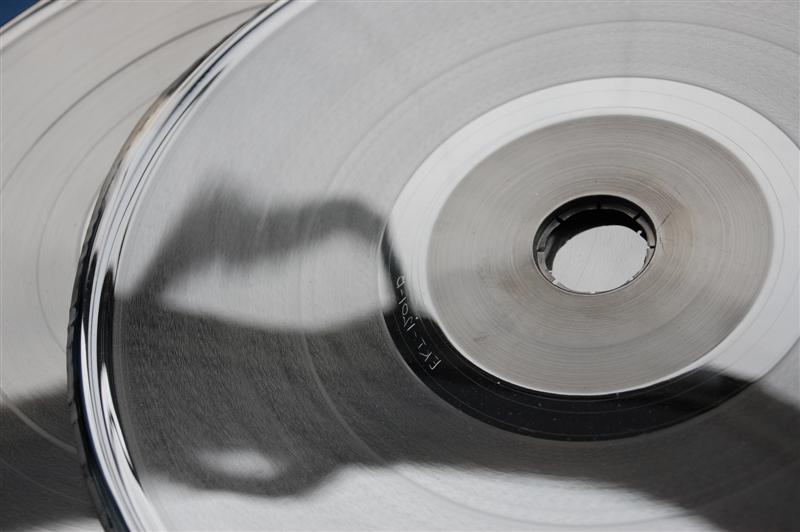
Recently I retrieved the metal stamper plates used to press the first and likely the only vinyl record I will ever have a hand in making: the Liquid Neon Sky EP. Until recently, these stamper plates were stored in a warehouse somewhere in Toronto, set aside after the production run in November of 2002. For whatever reason the plant held on to them and—six years later—emailed me to ask if I would like to pick them up. The company was shutting down their vinyl manufacturing division, apparently due to lack of demand.
Allegations of a vinyl comeback can be found almost anywhere you look. It is very hip to make the assertion that a new generation of music lovers is falling in love with the authenticity and warm sound of a classic medium that cannot be reduced to bits and bytes coursing through the ether. The major labels express delight at the prospect, of course—vinyl cannot be copied (i.e. pirated) as conveniently as the compact disc. And editors love an underdog story. But is the hype truly warranted—or is this just a fad? The audiophile demographic might not be going anywhere but new buyers aren’t likely to stick with vinyl for very long. I suspect a lot of what is going on comes down to social posturing—temporary, passing experiments in identity formation. Buying vinyl in the age of iPods is making a statement. (And I should know, having stuck with it longer than most.)
Flashback to 2002. Psytrance on vinyl is increasingly rare; many labels have stopped putting it out altogether. Moreover, little of what is released on wax has that cherished old school magic. An idealistic young psytrance fan from Canada decides to do something about this situation by licensing a pair of storming tracks from a popular U.K. Goa trance act for release on vinyl. Distributors show some interest in the project but wish to see something they can get their hands on. Brashly ignoring the risks of the venture, production begins after the master CD is sent to the pressing plant. White label test pressings are received and approved. The record goes into production at a cost of several thousand dollars. All for the love of a dying medium.
The distributors decide to pass on the release after seeing the final product. Both the style and the format are deemed to be obsolete. And so our intrepid protagonist has no options left but to sell the record independently. Hundreds of vinyls are individually packaged up and shipped to buyers around the world over the next several years but the release never sells out—never comes close to breaking even. Such are the consequences of rash action and idealism in business.
Fast forward to the present day. The glimmering metallic stamper plates reside in my workspace, a constant reminder of the lessons learned from my early experiences in the recording business. Never again will I mistake the medium of delivery for the music that it carries. Nor will I commit to expensive projects without just cause. It is so strange to think that I revelled in sentimentality and nostalgia for the past to such a degree; I am, after all, a man of the future. And to try and stave off the inevitable rise of CDs and physical media—such foolishness! What came over me? I was possessed by the ineffable qualities of vinyl: its tactility, imposing size, rich history, and timeless charm. But records are mere vessels, and I am not in the business of atoms. It is music that I am interested in, not the medium.
In case you are interested in what it takes to make a vinyl record, Razorcake has a great photo essay describing the manufacturing process. A more technical description of the history of vinyl pressing can be found here.








